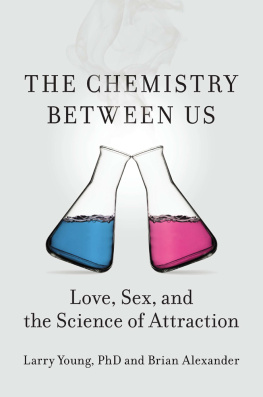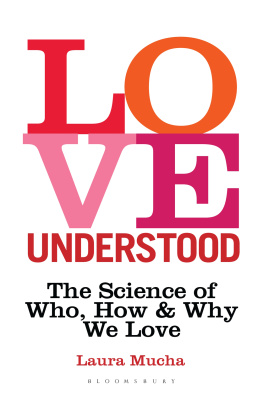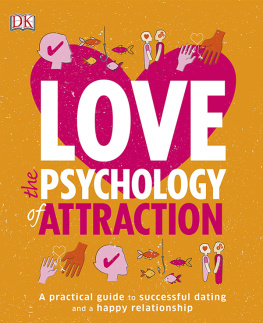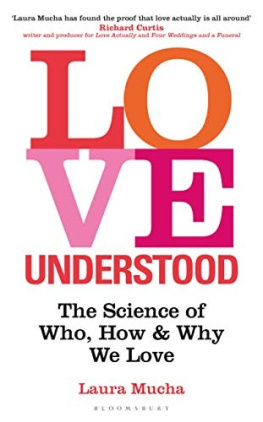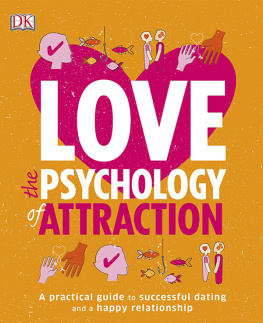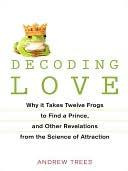THE CHEMISTRY
BETWEEN US

THE CHEMISTRY
BETWEEN US

LOVE, SEX, AND THE
SCIENCE OF ATTRACTION
Larry Young, PhD,
and
Brian Alexander
CURRENT
CURRENT
Published by the Penguin Group
Penguin Group (USA) Inc., 375 Hudson Street, New York, New York 10014, U.S.A. Penguin
Group (Canada), 90 Eglinton Avenue East, Suite 700, Toronto, Ontario, Canada M4P 2Y3
(a division of Pearson Penguin Canada Inc.) Penguin Books Ltd, 80 Strand, London
WC2R 0RL, England Penguin Ireland, 25 St. Stephens Green, Dublin 2, Ireland (a division of
Penguin Books Ltd) Penguin Books Australia Ltd, 250 Camberwell Road, Camberwell,
Victoria 3124, Australia (a division of Pearson Australia Group Pty Ltd) Penguin Books India
Pvt Ltd, 11 Community Centre, Panchsheel Park, New Delhi 110 017, India Penguin Group
(NZ), 67 Apollo Drive, Rosedale, Auckland 0632, New Zealand (a division of Pearson New
Zealand Ltd) Penguin Books (South Africa) (Pty) Ltd, 24 Sturdee Avenue, Rosebank,
Johannesburg 2196, South Africa
Penguin Books Ltd, Registered Offices:
80 Strand, London WC2R 0RL, England
First published in 2012 by Current,
a member of Penguin Group (USA) Inc.
10 9 8 7 6 5 4 3 2 1
Copyright Larry J. Young and Brian Alexander, 2012
All rights reserved
Illustrations by Biqing Li.
LIBRARY OF CONGRESS CATALOGING IN PUBLICATION DATA
Young, Larry, Ph.D.
The chemistry between us : love, sex, and the science of attraction / Larry Young and Brian Alexander.
p. cm.
Includes bibliographical references and index.
ISBN: 978-1-101-59528-2
1. LovePsychological aspects. 2. LovePhysiological aspects. 3. Sexual attraction.
4. Sex (Psychology) I. Alexander, Brian, 1977 II. Title.
BF575.L8Y68 2012
612.8dc23 2012019129
Printed in the United States of America
Set in Bulmer MT Std
Designed by Alissa Amell
No part of this book may be reproduced, scanned, or distributed in any printed or electronic form without permission. Please do not participate in or encourage piracy of copyrighted materials in violation of the authors rights. Purchase only authorized editions.
ALWAYS LEARNING
PEARSON
To our families, where love lives
Men are still led by instinct before they are regulated by knowledge.
THEODORE DREISER, SISTER CARRIE
INTRODUCTION
The notion of love as mystery is so ingrained in the human imagination, it may be our oldest clich. Plato called it irrational desire. Cole Porter seemed to speak for most of us when he threw up his hands and, in a kind of musical sigh of resignation, asked, What is this thing called love? In his classic song, a person describes being content, even if leading a humdrum life, until love mysteriously flew in, changed everything, and made a fool of me.
A t some time or other all of us are gobsmacked by the dramatic way our behavior can change when love flies in. And our desire for sex can seem boundless. We crave it so much, well lay out good money just to be reminded of it, to the financial benefit of Hugh Hefner, Jimmy Choo, and the economy of Las Vegas. The combination of erotic desire and the love it leads to may be the most powerful force on earth. Some people will kill for love. Well marry somebody with children and happily accept the job of parenting their kids, though we had no intention of living with children of any kind when we were single. Well change religions or join a religion for the first time. Well leave the warm breezes of Miami and move to the frostbitten climes of Minnesota. Well do any number of things we never imagined doing, think thoughts we never imagined thinking, adopt ways of living we never imagined adoptingall under the sway of love. And if love goes bad, well wonder, like Porters once-contented protagonist, what went wrong and how we could have been so foolish.
How does this happen? How can two complete strangers come to the conclusion that it would not only be pleasant to share their lives but that they must share them? How can a man say he loves his wife and yet have sex with another woman? What makes us stay in relationships even after the romance fades? How is it possible to fall in love with the wrong person? How do people come to have a type? How does love begin? What drives mothers to care for their babies? What accounts for the gender of the people at whom we aim our affection? What does it even mean to say one is female or male? Where does that idea reside? How is it formed?
When Larry began doctoral studies in neuroscience, within the zoology department of the University of Texas, he wasnt really thinking about trying to answer such questions. Then he started working with an unusual species of lizard. (Well explain later why these lizards are unusual.) Lizards wouldnt seem to have much to tell us about human love, but Larry began to make the connection in his own mind when he discovered he was able to completely and exquisitely control the sexual behavior of these animals by administering just one chemical. A single molecule, active in the brain, created fundamental changes in mating behavior. For Larry personally, and for his scientific career, it was a profound moment. He wasnt the first to realize that one chemical or another had such power: as youll see, earlier generations of scientists had paved the way. But as Larry researched their work, made discoveries of his own, and as he and others advanced the knowledge of social neurosciencethe study of how we behave in relation to othersa picture of the brain mechanisms underlying the mysteries that had befuddled so many for so long began to form in his mind. This book is an attempt to interpret that picture.
Throughout time, storytellers like Plato and Porter have performed much hand waving when trying to explain love, so daring to barge in where theyve already trod may seem like a fools errand. But weve teamed up to try, because new science is proving that Larrys instinct back in graduate school was correct: desire, love, and the bonds between people arent so mysterious after all. Love doesnt really fly in and out. The complex behaviors surrounding these emotions are driven by a few molecules in our brains. Its these molecules, acting on defined neural circuits, that so powerfully influence some of the biggest, most life-changing decisions well ever make.
We tend to think of the miasma of symbols, incantations, and, ultimately, behaviors surrounding love as mysterious because we seem to have so little mastery over them. Yet we also like to believe that were not driven by our most basic instincts, that being human insulates us from the force of passion. Humans, after all, have very large and complicated brain corticesthe frontal lobes. Weve taken great comfort in these seats of reason, congratulating ourselves on having risen above our unthinking, impulse-driven animal cousins through long evolutionary advancement.
The Stanford University physician and neuroscientist Josef Parvizi calls this attitude corticocentric bias. In fact, the brain is made up of a number of structures that respond to a galaxy of neurochemicals. Contrary to common wisdom, no one region of the brain is higher or lower than any other. Behavior doesnt always develop as part of a stepwise hierarchical process; its more of a parallel operation. This doesnt mean we are completely at the mercy of our irrational drives, and we will not argue so in this book. Reason can indeed help us apply the brakes. But we shouldnt underestimate the power of those drives, either. The brain circuits of desire and love have such enormous influence, they routinely overrule our rational selves, making our behavior subject to the force of evolutionary drives. As Parvizi has written, in the nineteenth century humans were considered to be strictly different from animals because of their voluntary inhibition of instinctual desires by virtue of rationality and pure reason. However, the times have changed. We have recently begun to acknowledge the biological bases of our core human values, such as empathy, sense of fairness, and culture in other animals.

